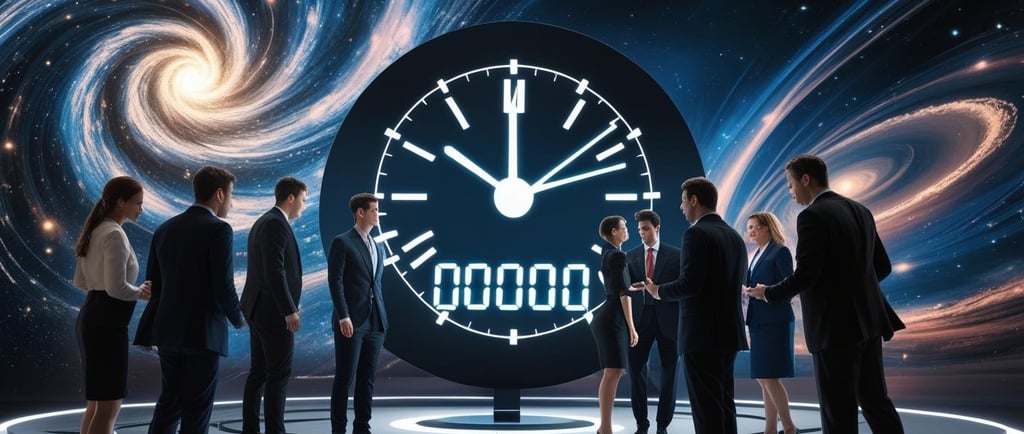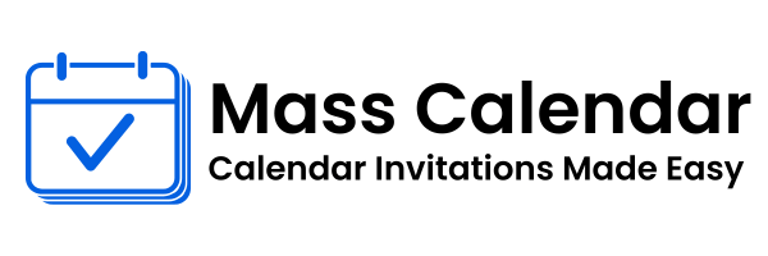Why Countdown Timers Are Essential for Modern Conferences and Webinars
In today’s fast-moving event landscape, time isn’t just money—it’s credibility. Whether you’re hosting a high-profile conference, an international webinar, or a hybrid summit with virtual and in-person audiences, precision timing is crucial. A small delay can ripple into logistical chaos. That’s why more organizers are turning to simple yet effective tools like countdown timers to ensure smooth, timely execution.
BLOG
6/18/20254 min read


In today’s fast-moving event landscape, time isn’t just money—it’s credibility. Whether you’re hosting a high-profile conference, an international webinar, or a hybrid summit with virtual and in-person audiences, precision timing is crucial. A small delay can ripple into logistical chaos. That’s why more organizers are turning to simple yet effective tools like countdown timers to ensure smooth, timely execution.
From backstage guidance to pre-event build-up, a countdown timer for events enhances the experience for organizers, speakers, and attendees alike. In this blog, we explore how countdown timers help streamline operations, reduce confusion, and elevate audience engagement.
The Invisible Glue That Holds an Event Together
Running a conference or webinar often involves juggling dozens of moving parts—speakers, tech staff, media, moderators, transitions, and of course, the audience. When one part runs off-schedule, the entire agenda suffers. A countdown timer for conference segments ensures that all stakeholders have a visual cue to stay in sync.
Countdown timers function as real-time schedulers. They reduce reliance on verbal reminders or frantic backstage signals. Instead, they act as silent organizers, signaling when to begin, wrap up, or transition.
Empowering Speakers With Visual Time Awareness
Speakers often lose track of time mid-presentation. Some get caught up in audience reactions; others simply underestimate the time spent on each slide. This is where a countdown timer for speakers becomes invaluable. By displaying remaining time in an easily visible format—either backstage or on screen—speakers are more likely to finish within their allocated slot.
Not only does this help avoid overruns, but it also reduces the pressure on moderators or hosts to interrupt or cut sessions short.
A stage timer for events, discreetly positioned on or near the lectern, is an ideal solution to provide live time tracking without distracting the audience.
Elevating the Attendee Experience
Whether your audience is seated in a ballroom or logged in from their home office, their experience begins the moment they arrive. A waiting room without context feels like wasted time. In contrast, displaying a web timer countdown creates anticipation and clearly signals when a session will begin.
Especially for online participants, a livestream countdown timer can help them mentally prepare and prevent early drop-offs. If people know exactly when a session will start, they are more likely to stay engaged.
Countdown visuals also help prevent confusion in hybrid settings. Remote attendees and in-person guests both benefit from a unified visual signal that something is starting or resuming.
Online and Hybrid Formats Require Stronger Time Management
Virtual and hybrid events introduce a new level of complexity. Lag, timezone differences, and device syncing can lead to missed moments. That’s why having an online countdown timer shared across devices is so useful. Whether it's embedded in a livestream player or displayed on a shared screen, this timer ensures everyone—organizers, viewers, and speakers—are on the same page.
In webinars, this helps moderate discussions and Q&A sessions more effectively. During live polls or audience activities, countdowns can add urgency and structure.
How Countdown Timers Improve Transitions
It’s not just about starting and ending on time. Transitions between sessions, speakers, or formats (e.g., keynote to panel) are some of the most delicate moments in any event. Countdown timers offer a subtle yet effective way to manage these transitions.
For example:
Displaying a countdown timer for conference tracks between speaker changes helps prepare both the incoming presenter and the audience.
Using a stage timer for events ensures technical staff stays in sync during video transitions or lighting changes.
A web timer countdown during breaks or networking sessions reminds attendees when to return, reducing downtime and improving flow.
Setting Expectations From the Start
Before any session begins, setting clear expectations is key. A well-designed livestream countdown timer tells online audiences: “We are live, and something is about to begin.” It conveys professionalism and respect for attendees' time.
Even in physical venues, projecting a countdown timer for events onto large screens before a segment starts boosts punctuality. It also reduces last-minute confusion and ensures participants don’t miss important announcements or keynotes.
Key Advantages of Using Countdown Timers in Events
Let’s summarize some of the practical benefits of using countdown timers in modern conferences and webinars:
1. Speaker Control
Visual timers keep speakers on track, reduce overages, and eliminate the need for manual interruptions.
2. Audience Focus
Visible countdowns reduce distraction and improve attention spans by setting clear time expectations.
3. Hybrid Cohesion
For dual audiences (live and virtual), a unified time signal bridges the gap between physical and digital presence.
4. Break Management
Timers help manage breaks, preventing unnecessary delays and keeping your agenda intact.
5. Branding and Experience
Custom countdown visuals can be branded, adding a polished look while maintaining function.
Best Practices for Implementing Countdown Timers
If you're planning to integrate timers into your next event, consider the following best practices:
Keep it simple: Use bold, legible fonts and high contrast colors.
Synchronize time zones: For global events, standardize on a single timezone or localize timers appropriately.
Place them strategically: Ensure speakers and staff have a clear view of backstage timers; audience-facing timers should be elevated or embedded on-screen.
Test thoroughly: Run a full dress rehearsal with timers in place. Adjust positioning and timing as needed.
Keep backup options ready: If you're relying on internet-based timers, have a local fallback timer in case of connectivity issues.
Conclusion: Small Element, Big Impact
In a world of high expectations and tight schedules, the humble countdown timer plays a vital behind-the-scenes role. Whether you're managing a major keynote, coordinating a hybrid product launch, or hosting a webinar with hundreds of attendees, having a countdown timer for events on standby can save time, reduce confusion, and boost the overall event experience.
From speaker focus to audience punctuality, countdown timers transform the intangible concept of time into a shared visual reality. It's no longer just about starting on time—it's about staying on rhythm from start to finish.
MassCalendar.in
Send Bulk & Mass Calendar Invites Instantly
CONTACT
Meetings
+44 (0) 203 916 5117
© 2025. All rights reserved.
Help?
